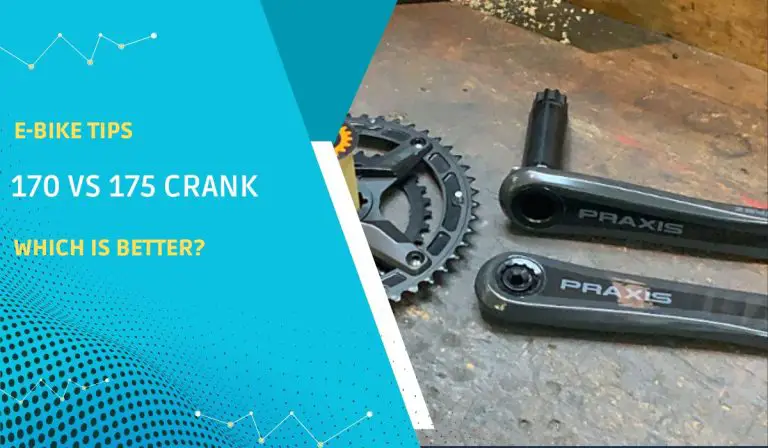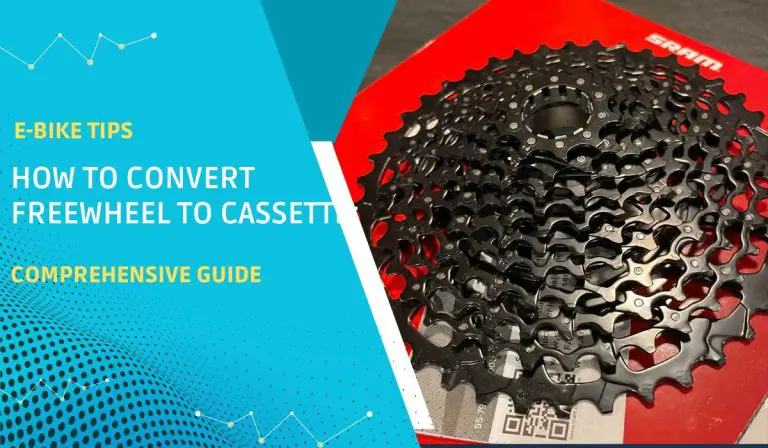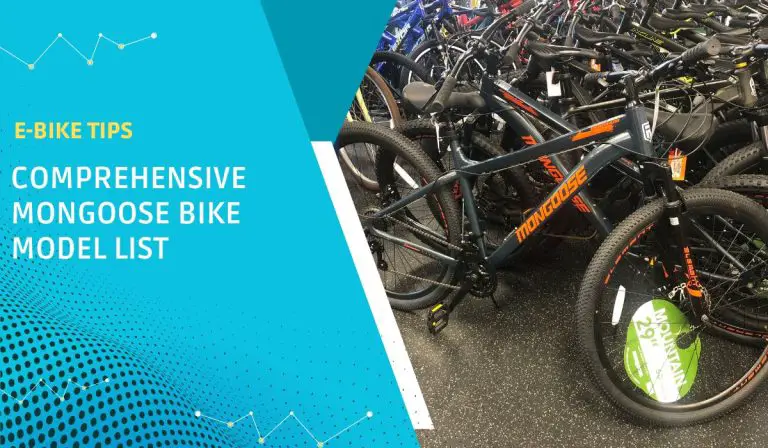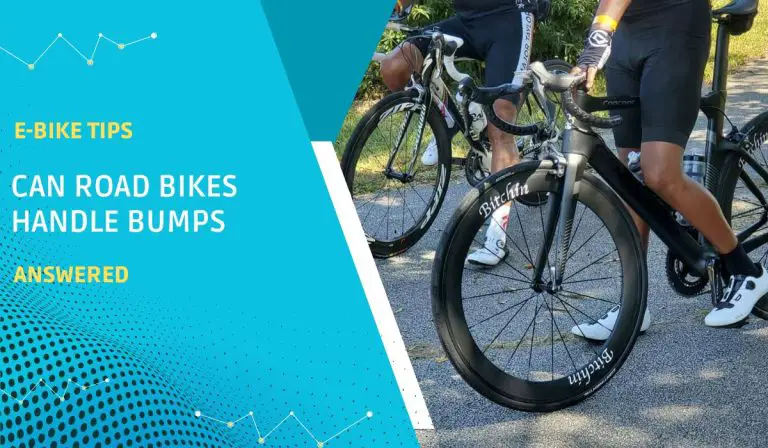The choice between 170mm and 175mm cranks depends on rider height and style. Taller riders benefit from 175mm cranks, which proportionally fit longer legs. Shorter riders find 170-mm cranks more suitable.
I chose to switch from a 170 mm to a 175, and despite my average height, the result surprised me. Those extra 5 mm made a significant difference. Pedaling became more potent, aiding uphill climbs. It felt like I had found a hidden boost button! However, I had to adjust in tight corners. This experience taught me that even small tweaks can boost my performance.
In this article, I’ll explore crank lengths, their impact on my performance, how to choose the right length for me and my riding style, and provide a list of lengths (170 mm to 175 mm) from various brands.
Skip To Section Here
- 1 170 or 175 cranks compared
- 2 170 mm and 175 mm crank length differences
- 3 Why crank length matters
- 4 How to Measure Crank Length
- 5 Advantages and Disadvantages of 170mm Cranks
- 6 Advantages and Disadvantages of 175mm Cranks
- 7 Performance Testing and Research
- 8 Considerations for Different Cycling Disciplines
- 9 Conclusion
170 or 175 cranks compared
Here is a table comparing the 170mm and 175mm cranks:
| Features | 170mm | 175mm |
| Effective Gear Inches | 52.2 | 53.3 |
| Q-factor | 148 mm | 150 mm |
| Weight | 250 g | 260 g |
| Pros | More compact, better for climbing | More efficient, better for sprinting |
| Cons | Less efficient, less powerful | Less compact, not as good for climbing |
The 170mm crank is shorter and has a narrower Q-factor, which makes it better for climbing. It is also lighter, which can be an advantage for some riders. However, the 175mm crank is more efficient and powerful, which can be an advantage for sprinting and riding in a straight line.
Ultimately, your best crank length depends on your needs and preferences. If you are unsure which crank length is right for you, it is best to consult a bike fitter.
Here are some additional factors to consider when choosing between a 170mm and 175mm crank:
- Your height: Taller riders typically need longer cranks, while shorter riders typically need shorter cranks.
- Your flexibility: More flexible riders can usually handle longer cranks, while less flexible riders may prefer shorter cranks.
- Your riding style: If you do a lot of climbing, you may want to choose a shorter crank. If you do a lot of sprinting, you may want to choose a longer crank.
- Your bike: Some bikes are designed for specific crank lengths. For example, a cyclocross bike may have shorter cranks than a road bike.
170 mm and 175 mm crank length differences
The numerical difference between 170mm and 175mm crank lengths is a mere 5mm. Such a small numerical difference might not seem significant, but when translated into pedal strokes during a ride, it can remarkably affect your cycling experience, from power delivery to comfort and overall efficiency.
Why crank length matters
A longer crank, like 175mm, allows for more leverage, making it advantageous for climbing, just like a longer wrench offers more torque. On the other hand, a shorter crank, say 170mm, emphasizes quicker pedal rotations, which can be beneficial for maintaining a higher rhythm.
Think of it like changing gears in a car: longer cranks offer a “lower gear” for uphill challenges, while shorter cranks resemble a “higher gear” for speedy flats. Even a mere 5mm difference alters the mechanical advantage, affecting how much force your muscles need to exert.
So, on a steep ascent, longer cranks might help you power through, while in a fast-paced race, shorter cranks could enhance your pedal turnover.
How to Measure Crank Length
Crank length is usually calculated by measuring from the center of the bottom bracket axle to the center of the pedal axle of your bike.
If you’re uncertain about the crank length on your bicycle, the most straightforward method to determine it is usually by inspecting the underside of your cranks, right beneath the pedal axle. Typically, you’ll find the crank length engraved or printed there.
In cases where this information isn’t present, you can easily determine the crank length by using a tape measure.
Advantages and Disadvantages of 170mm Cranks
Choosing shorter crank lengths, like the 170mm variation, comes with a number of advantages that can elevate your cycling experience. Imagine confidently maneuvering through sharp turns, knowing your pedals won’t scrape the ground due to improved clearance. Additionally, shorter cranks enhance your aerodynamics, enabling you to glide through the air with reduced resistance and increased speed.
However, as with any choice, there are limitations. While shorter cranks promote faster pedaling, they might trade off some power. This trade-off is particularly advantageous for specific cycling disciplines such as road cycling or criterium racing, where maintaining high speeds and swift transitions are paramount. For instance, when competing in road cycling, the 170mm cranks shine, allowing you to spin your legs swiftly and excel in fast-paced events.
Advantages and Disadvantages of 175mm Cranks
Longer crank lengths, like the 175mm option, offer a range of advantages that can significantly impact your cycling performance. Picture this: when you’re faced with uphill climbs, the increased leverage provided by longer cranks can be a game-changer for you. It allows you to apply more force with each pedal stroke, making you overcome tough inclines in a more proper way.
Furthermore, the potential gains in power output are worth noting: longer cranks may allow you to generate more power, especially if you have the strength to capitalize on the extended range of motion.
However, there’s a flip side. Longer cranks might lead to a decrease in pedaling tempo, which could affect your efficiency on flat terrain or during fast-paced activities.
A prime example of the advantages of 175mm cranks can be seen in mountain biking. When navigating steep, demanding trails, these longer cranks provide the leverage needed to surge uphill effectively, maintaining momentum and conquering obstacles. Similarly, in track cycling, where short bursts of power are crucial, the 175mm cranks can enhance the explosive starts needed to gain an edge.
Performance Testing and Research
Several performance tests have shed light on the impact of different crank lengths, specifically comparing 170mm (and shorter) and 175mm options. See below for a YouTube live test.
Most results from research conducted indicate that the 175mm cranks led to higher power output during climbs, attributed to the increased leverage they provided. In terms of muscle fatigue, I found that the 170mm cranks led to reduced muscle fatigue, possibly due to the faster pedaling cadence they allow, which could distribute the workload more evenly across muscles.
Pedaling efficiency was also observed to be slightly better on the 170mm cranks, possibly due to the shorter lever arm requiring less effort for each pedal stroke.
While the 175mm cranks can boost power output and leverage, the 170mm cranks might excel in terms of muscle fatigue and pedaling efficiency, illustrating the trade-offs that come with each choice.
Considerations for Different Cycling Disciplines
According to some recommendations based on common knowledge on bike forums, communities, and social media, I have been able to gather some information and will recommend which of these crank lengths will be a fit for you.
Road Racing
For road racing, where a combination of speed and endurance is important, many riders prefer shorter crank lengths like 170mm. The quicker pedaling cadence that shorter cranks encourage can be advantageous in peloton situations and during sprints. Take, for instance, a road racer who mentions that the 170mm cranks allow them to maintain a swift cadence through varying terrains, aiding in better pace control.
Mountain Biking
For mountain biking, where navigating technical trails and steep ascents is common, longer crank lengths, such as 175 mm, can provide more leverage for climbing. An avid mountain biker explains that the extra length of the 175mm cranks enables them to power through challenging uphill sections effectively, maintaining momentum and control.
Time Trials
For time trials, which demand raw power and efficiency, the choice might depend on the rider’s strengths. Cyclists with explosive power might lean towards 175-mm cranks to maximize power output during the short bursts of a time trial.
On the other hand, riders with a focus on smooth pedaling and sustained effort might opt for 170mm cranks. A time trial specialist shares that the 170mm cranks allow them to maintain a consistent rhythm, minimizing fatigue over longer time trial distances.
It’s important to remember that personal preferences and biomechanics play a significant role in crank length selection. It’s always recommended to test different lengths and seek guidance from experts to find the best fit for your specific cycling discipline and goals.
Conclusion
To sum it up, the decision between 170mm and 175mm crank lengths is far from insignificant. You must know where your goals, body attributes, and preferred riding style intersect and balance them. The verdict isn’t determined solely by your riding type—road racing, mountain biking, or time trials—but rather by the blend between your characteristics and cycling preferences.
Thank you for reading!





